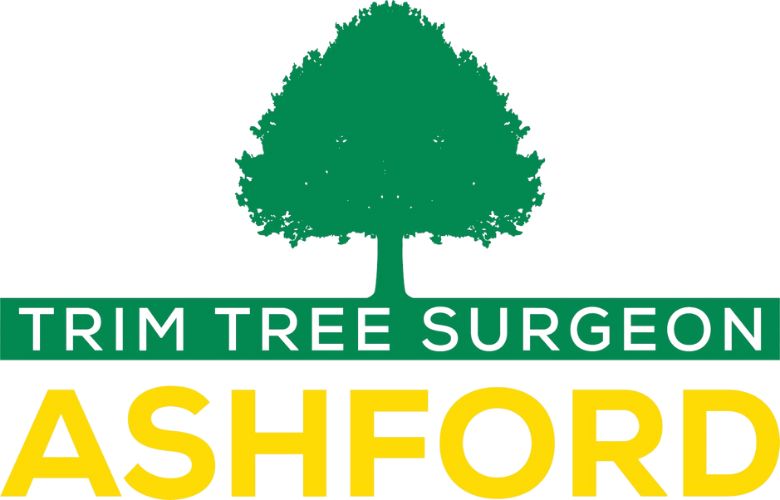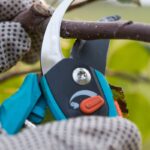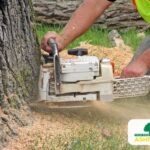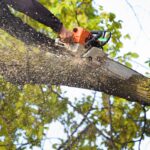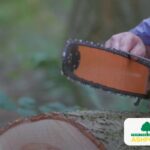Do you want to unlock the true potential of your trees? Discover the transformative power of crown pruning – a technique that enhances both tree health and aesthetics in the UK.
Crown pruning is more than just a maintenance practice; it’s a science-backed theory with profound implications for our natural surroundings.
By strategically removing dead, damaged, or overcrowded branches from the crown of a tree, crown pruning promotes overall tree vitality. This process allows for increased air circulation, sunlight penetration, and nutrient absorption – all vital factors in maintaining optimal tree health. Additionally, crown pruning helps mitigate the risk of branch failure and disease by eliminating weak points and improving structural integrity.
But it’s not just about health; crown pruning also brings out the inherent beauty of trees. By selectively shaping their crowns, we can create visually appealing silhouettes while preserving the unique character of each species.
In the realm of UK tree care, crown pruning plays an integral role in ensuring longevity and enhancing aesthetics. We’ll explore the techniques behind this transformative practice and its numerous benefits for both trees and those who admire them.
Importance of Proper Tree Care
You can’t underestimate the importance of taking good care of your trees – it’s vital for their health and beauty. Pruning is a key element of tree care, offering a range of advantages beyond just making a tree look nice.
Pruning helps get rid of dead or diseased branches, making sure the tree grows healthily and reducing the risk of potential hazards. Pruning also increases the tree’s exposure to sunlight and air, improving its overall health and reducing the risk of fungal diseases.
Healthy trees can also add value to your property by creating an attractive and inviting atmosphere. Potential buyers are often drawn to homes with a well-maintained garden and healthy trees. Investing effort into proper tree care ensures their longevity and increases your property value.
Let’s take a look at the benefits of crown pruning techniques.
Benefits of Crown Pruning
When it comes to crown pruning, you’ll be pleased to know there are numerous advantages.
By encouraging better air circulation and sunlight penetration, you’re creating a healthier atmosphere for your trees.
This leads to improved growth and vitality overall.
Promoting Better Air Circulation and Sunlight Penetration
Improve the health and appearance of your trees in the UK by enhancing air circulation and sunlight penetration through crown pruning. This effective technique promotes better air quality and tree maintenance.
Removing branches selectively opens up the canopy to increase airflow. This reduces the risk of disease, insect infestation, and fungal growth.
Thinning the crown allows more sunlight to reach lower branches and surrounding vegetation. Sunlight is essential for photosynthesis, producing energy for tree growth and vitality.
Crown pruning ensures better air circulation and optimal sunlight penetration for overall tree growth and vitality.
Ensuring Overall Tree Growth and Vitality
Ensure the flourishing and vitality of your arboreal companions by employing techniques that promote robust growth and abundant life.
Tree growth is a fundamental part of tree health, and it can be improved through proper crown pruning. By carefully removing dead or diseased branches, you enable the tree to allocate its resources more effectively towards healthy growth. Crown pruning also helps maintain an even canopy, preventing excessive competition between branches for sunlight and nutrients. This encourages better overall tree vitality, as each branch receives an adequate amount of essential resources.
Furthermore, crown pruning encourages new growth by stimulating the development of lateral shoots and boosting the tree’s ability to produce energy through photosynthesis. These techniques of crown pruning are essential for optimal tree growth and vitality, creating a sturdy foundation for continued health and attractive appearance without compromising structural integrity or natural beauty.
Techniques of Crown Pruning
To improve the health and appearance of your trees, familiarize yourself with crown pruning techniques. This involves cutting specific branches or parts of the tree’s canopy to improve its structure and vitality. Here are three main methods for crown pruning:
Thinning: This entails selectively removing branches to reduce density and allow more light in. It also helps with air circulation, reduces wind resistance, and prevents weak branch connections.
Raising: Removing lower branches creates clearance above the ground or structures. This is especially helpful for improving visibility, avoiding obstruction, and increasing safety around the tree.
Reduction: Larger branches are cut back to smaller lateral branches, reducing the length or height of the crown. This technique maintains a balanced shape and reduces stress on the remaining limbs.
By using tools such as loppers and handsaws, you can effectively manage your tree’s growth and ensure its long-term health. Pruning not only enhances aesthetics but also decreases the chance of branch failure and disease, as it promotes sound structure and vigor without compromising their natural form or function.
Pruning also allows for better air circulation and sunlight penetration, leading to healthier foliage and better overall tree health. Furthermore, by removing dead or diseased branches, you can prevent the spread of pests and diseases to other parts of the tree or nearby plants. Ultimately, proper pruning practices contribute to the longevity and beauty of your trees while minimizing potential risks and preserving their natural integrity.
Reducing the Risk of Branch Failure and Disease
By properly managing tree growth through crown pruning, you can significantly reduce the risk of branch failure and disease. Crown pruning involves selectively removing branches to improve tree structure and reduce maintenance needs. This technique helps eliminate weak or diseased branches that may break and cause damage.
Reducing the weight and density of the crown improves air circulation, minimizing the chances of fungal infection and other diseases. In addition, crown pruning promotes new growth by redirecting energy to healthier branches, further enhancing tree health and aesthetics.
With reduced risks of failure and disease, trees will have a longer lifespan while retaining their beauty.
To understand how crown pruning plays a vital role in achieving these goals, we will now move on to discussing the ‘longevity and beauty of trees’.
Longevity and Beauty of Trees
Take the time to appreciate the lasting beauty and long life of healthy trees, as they give shade, shelter, and a feeling of peace to your surroundings.
To maintain their advantages in your setting, preserving the longevity and improving the aesthetics of trees is essential. Through crown pruning, you can make sure that your trees stay healthy and attractive for many years. Crown pruning involves cutting off branches or leaves to improve tree structure, reduce the chance of failure, and promote overall tree health. This process also makes trees look better by improving their shape and allowing light to pass through the canopy.
With the correct crown pruning techniques in place, you can effectively manage tree growth while keeping their beauty.
To gain further understanding of this important practice, move on to the next section which focuses on the role of crown pruning in UK tree care.
Role of Crown Pruning in UK Tree Care
Discover how crown pruning is a vital part of tree care in the UK. Crown pruning, also known as tree canopy reduction, is a technique used by arborists to promote tree health and aesthetics. It involves selectively removing branches and foliage from the upper part of the tree’s canopy.
This process has several advantages:
Improves Tree Structure: By cutting away dead, weak, or overcrowded branches, crown pruning helps to improve the tree’s structure and stability.
Boosts Air Circulation: Thinning out the crown allows for improved air circulation within the tree, decreasing the risk of diseases caused by stagnant moisture.
Encourages Sunlight Penetration: Crown pruning creates space for sunlight to reach lower parts of the tree, encouraging healthy growth and photosynthesis.
Crown pruning plays a key role in the care and well-being of trees in the UK by improving structure, increasing air circulation, and promoting sunlight penetration.
Frequently Asked Questions
How often should crown pruning be done?
Crown pruning should be carried out regularly to maintain the health and aesthetics of trees. Frequency depends on various factors such as species, age, condition, and desired outcome. Generally, pruning the crown every 3-5 years is recommended to promote proper growth and remove dead or diseased branches.
This helps to enhance tree health, improve air circulation, reduce the risk of falling branches, and enhance the visual appeal of your landscape.
Can crown pruning harm the health of a tree?
Crown pruning, if carried out incorrectly, can harm a tree’s health. Excessive removal of branches can cause weak branch attachments and a higher risk of breakage. It’s crucial to get a professional arborist in to assess the tree’s condition and determine the appropriate pruning methods. They’ll ensure that only necessary branches are removed, preserving the tree’s health and structural integrity.
Are there any specific tree species that should not undergo crown pruning?
When considering tree species for crown pruning in the UK, it’s important to note that not all trees are suitable. Certain species may be more vulnerable to damage or stress when undergoing this pruning technique. It’s essential to assess the characteristics and growth habits of each species before deciding if crown pruning is appropriate. Additionally, correct crown pruning techniques should be used to reduce the risk of harm and encourage healthy growth in the chosen species.
What are the signs that indicate a tree may need crown pruning?
To determine if a tree needs crown pruning, look for signs such as dead or dying branches, excessive leaning, and overcrowding. These indicate the need for pruning to improve the health and appearance of the tree.
Pruning offers several advantages, including increased sunlight penetration, improved air circulation, and reduced risk of branch failure. Removing dead or damaged branches and thinning out dense areas can help to promote tree vitality and reduce the chance of disease or pest infestation.
Are there any legal regulations or permits required for crown pruning in the UK?
In the UK, there are legal regulations and permits required for crown pruning. It’s important to check with your local council or tree officer to determine what applies in your area.
These regulations ensure safe and responsible pruning. An application and fee may be necessary to obtain the required permits. Failure to comply could result in penalties, however, the benefits of crown pruning – such as improved tree health and aesthetics – outweigh any costs or restrictions.
Frequency of pruning depends on factors like species, age, and condition.
Thank you for reading our post, please reach out to us if you enjoyed the article or if you want to explore some of our service please see below:
